Notebook of Gerard Henderson Cowan - Part 4
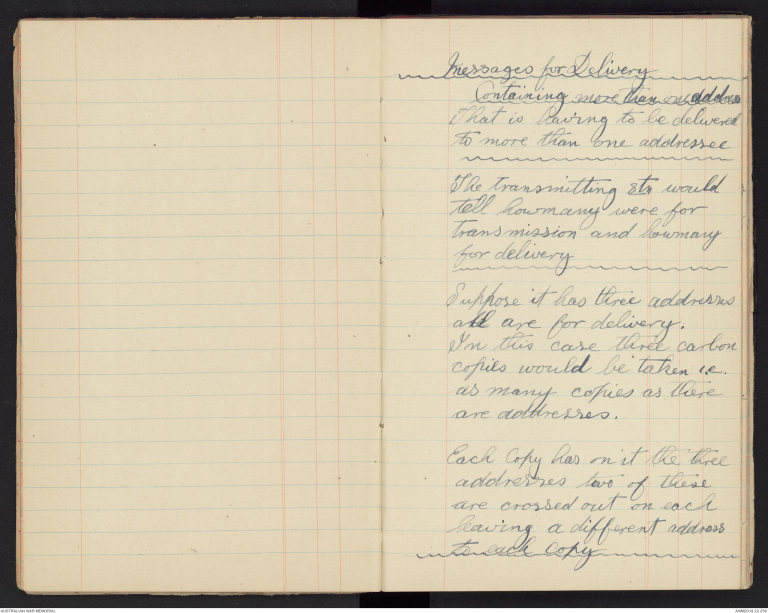
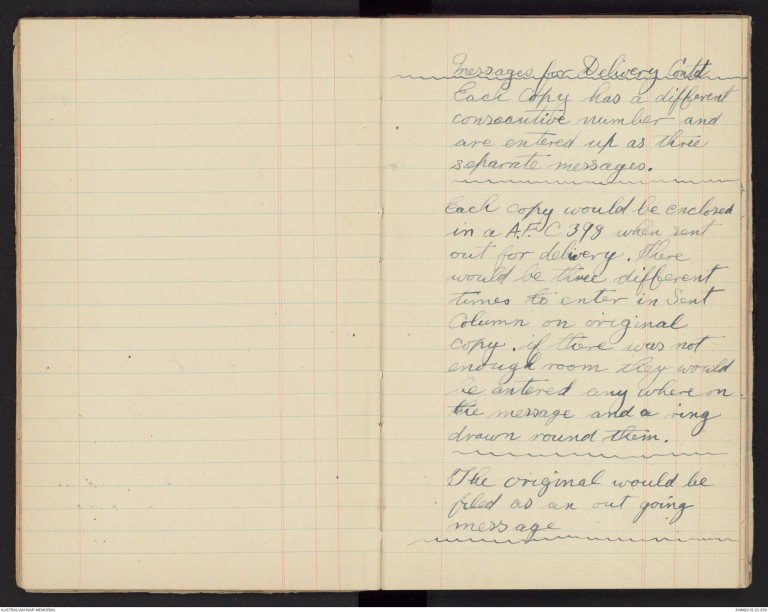
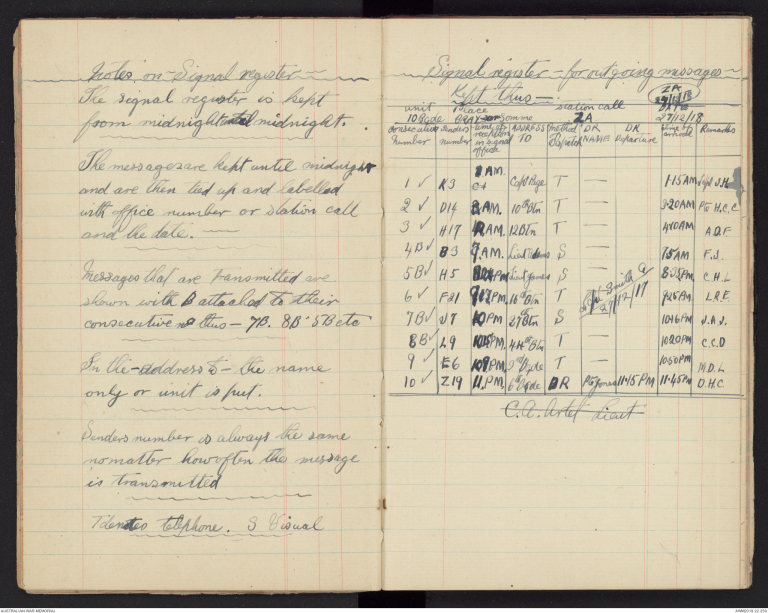
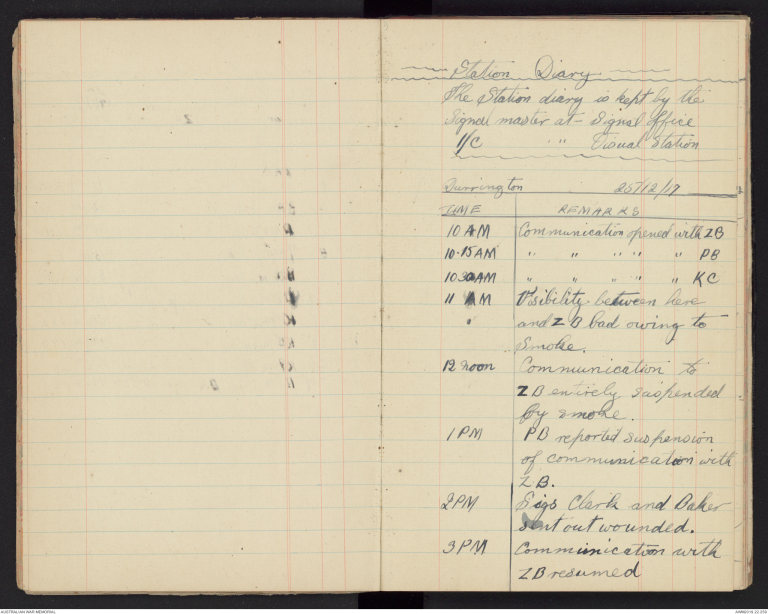
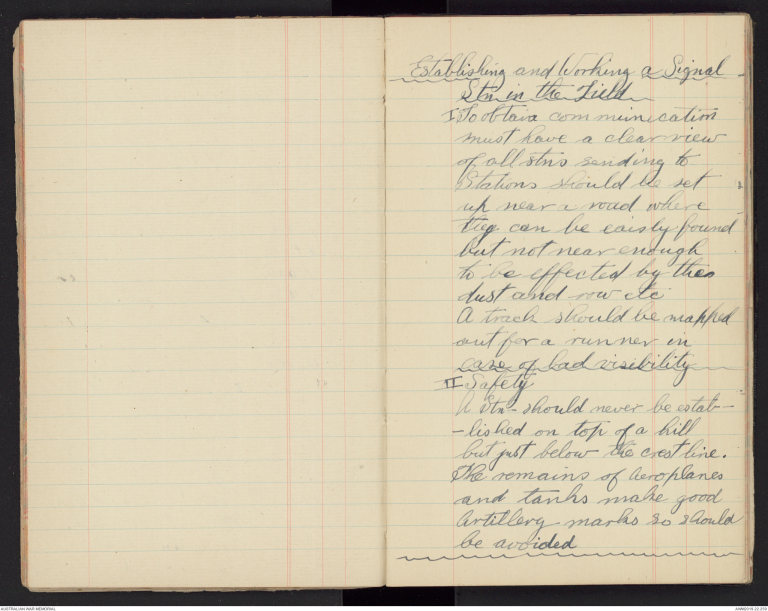
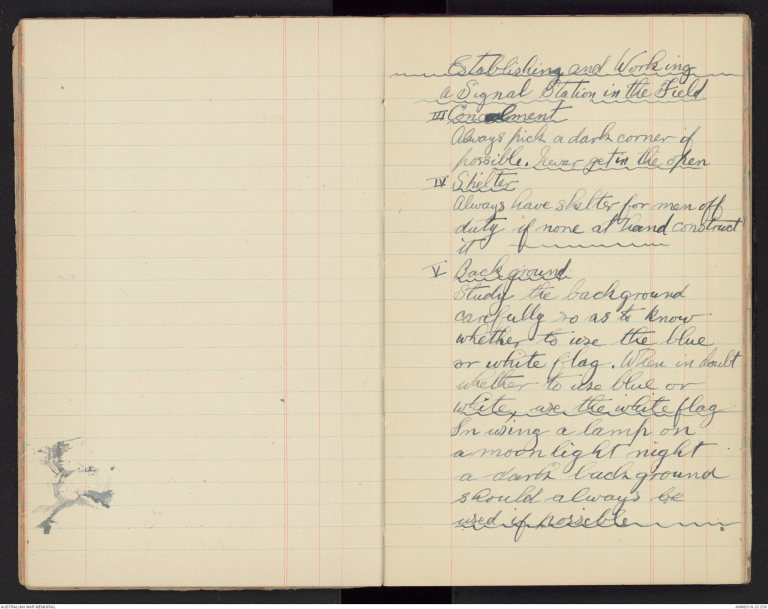
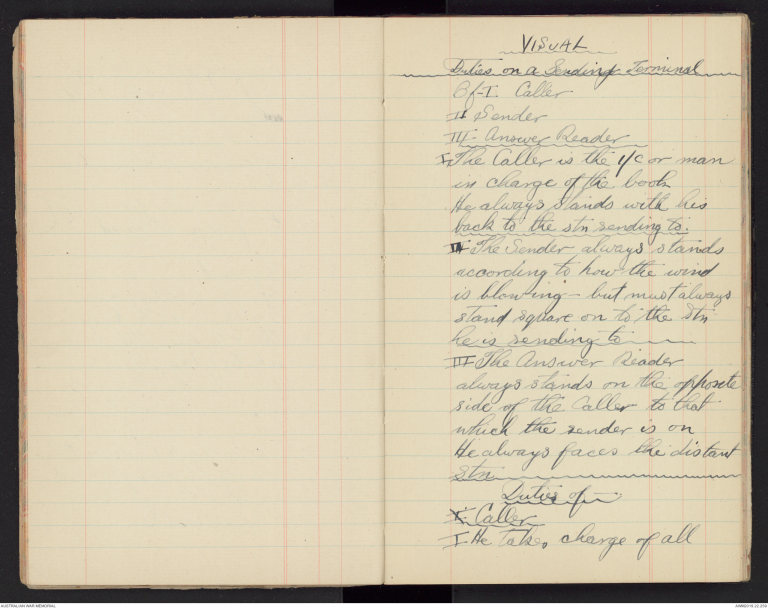
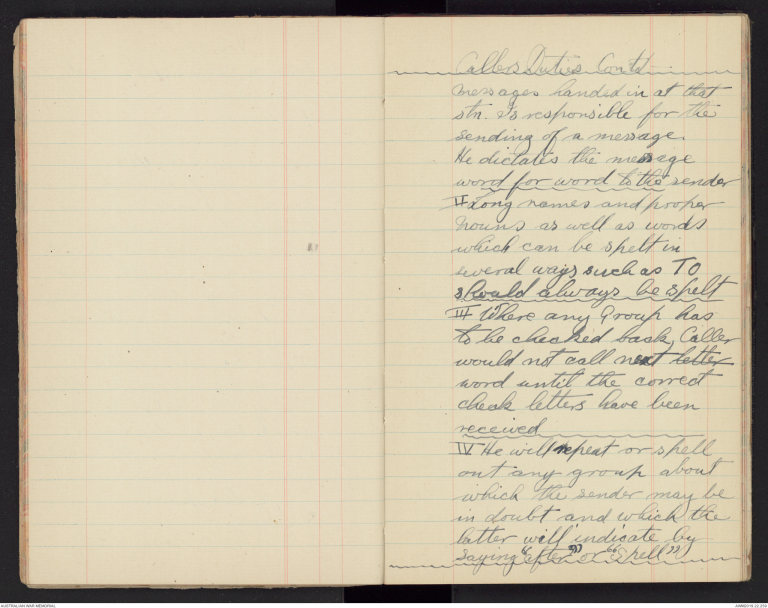
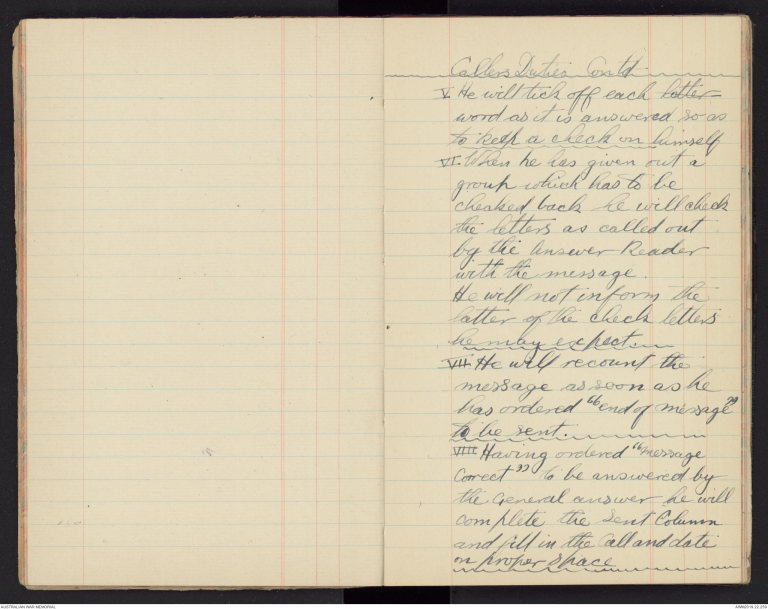
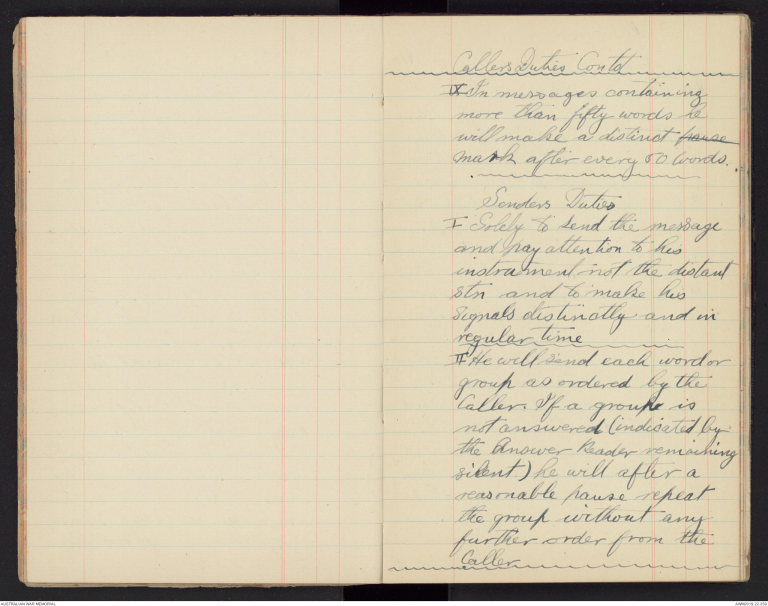
Messages for Delivery
Containing more than one address
That is having to be delivered
to more than one addressee
The transmitting stn would
tell how many were for
transmission and how many
for delivery
Suppose it has three addresses
all are for delivery.
In this case three carbon
copies would be taken i.e.
as many copies as there
are addresses.
Each Copy has on it the three
addresses two of these
are crossed out on each
leaving a different address
to each copy
Messages for Delivery Contd
Each Copy has a different
consecutive number and
are entered up as three
separate messages.
Each copy would be enclosed
in a A.F.C 398 when sent
out for delivery. There
would be three different
times to enter in Sent
Column on original
copy. if there was not
enough room they would
be entered any where on
the message and a ring
drawn round them.
The original would be
filed as an out going
message
Notes on - Signal register -
The signal register is kept
from midnight until midnight.
The messages are kept until midnight
and are then tied up and labelled
with office number or station call
and the date. -
----------------------------
Messages that are transmitted are
shown with B attached to their
consecutive nos. this- 7B. 8B 5B etc
-----------------------------------
In the -address to- the name
only or unit is put.
-----------------------------
Senders number is always the same
no matter how often the message
is transmitted
-------------------------
T denotes telephone. S Visual
Signal register for outgoing messages
Kept thus
|
Unit 10 Bgde |
Place BraySomme |
Station call ZA |
Date 27/12/18 |
|||||
|
corasec alive number |
Senders number |
time of reception in signal office |
Address TO |
DR Name |
DK Departure |
Time of arrival |
Remarks | |
| 1 | K3 | 1 AM | Capt Bge | T | - | 1.15AM | Sgt S.H. | |
| 2 | D14 | 3 AM | 10th Btn | T | - | 3.20AM | Pte H.C.C. | |
| 3 | H17 | 11 AM | 12 Btn | T | - | 4.10AM | A.D.F. | |
| 4B | B3 | 7 AM | Lieut [[?]] | S | - | 1.5 A.M. | F.J. | |
| 5B | H5 | 2 PM | Lieut James | S | - | 8.35PM | C.H.L. | |
| 6 | F21 | 9 PM | 16th Btn | T | - | 9.25PM | L.R.E. | |
| 7B | V7 | 10 PM | 27th Btn | S | - | 10.16PM | J.A.J. | |
| 8B | L9 | 10.15 PM | 44th Btn | T | - | 10.20PM | C.C.D. | |
| 9 | E6 | 10 PM | 2nd Bde | T | - | 10.50PM | M.D.L. | |
| 10 | Z19 | 11 PM | 6th Bde | DR |
Pte Jones |
11.15 PM | 11.45PM | D.H.C. |
C.A. Artef Lieut
Station Diary
The station diary is kept by the
Signal master at - Signal Office
I/C " " Visual Station
Durrington 25/12/17
| TIME | REMARKS |
| 10 AM | Communication opened with ZB |
| 10.15 AM | " " " PB |
| 10.30 AM | " " " KC |
| 11 AM |
Visibility between here and ZB bad owing to smoke. |
| 12 noon |
Communication to ZB Entirely suspended by smoke |
| 1 PM |
PB reported suspension of communication with ZB |
| 2 PM |
Sigs Clark and Baker sent out wounded |
| 3PM |
Communication with ZB resumed |
Establishing and working a Signal
Stn in the Field
I To obtain communication
must have a clear view
of all stns sending to
Stations should be set
up near a road where
they can be easily found
but not near enough
to be effected by the
dust and row etc
A track should be mapped
out for a runner in
case of bad visibility
II Safety
A Stn - should never be established
on top of a hill
but just below the crest line.
The remains of aeroplanes
and tanks make good
Artillery marks so should
be avoided.
Establishing and Working
a Signal Stn in the Field
III Concealment
Always pick a dark corner if
possible. Never get in the open
IV Shelter
Always have shelter for men off
duty if none at hand construct
it
V Background
Study the background
carefully so as to know
whether to use the blue
or white flag. When in doubt
whether to use blue or
white, use the white flag.
In using a lamp on
a moonlight night
a dark background
should always be
used if possible
VISUAL
Duties on a Sending Terminal
Bf-I Caller
II Sender
III Answer Reader
I The caller is the I/C or man
in charge of the book
He always stands with his
back to the stn sending to
II The sender always stands
according to how the wind
is blowing - but must always
stand square on to the stn
he is sending to
II The Answer Reader
always stands on the opposite
side of the Caller to that
which the sender is on
He always faces the distant
stn
Duties of -
I Caller
I He takes charge of all
Callers Duties Contd -
messages handed in at that
stn. Is responsible for the
sending of a message.
He dictates the message
word for word to the sender
II Long names and proper
nouns as well as words
which can be spelt in
several ways such as TO
should always be spelt
III Where any Group has
to be checked back, Caller
would not call next letter
word until the correct
check letters have been
received
IV He will repeat or spell
out any group about
which the sender may be
in doubt and which the
letter will indicate by
saying "after" or "spell"
Callers Duties Contd -
V He will tick off each letter
word as it is answered so as
to keep a check on himself
VI When he has given out a
group which has to be
checked back he will check
the letters as called out
by the Answer Reader
with the message.
He will not inform the
latter of the check letters
he may expect.
VII He will recount the
message as soon as he
has ordered "end of message"
to be sent.
VIII Having ordered "message
correct" to be answered by
the general answer he will
complete the Sent Column
and fill in the Call and date
in proper space
Callers Duties Contd -
IX In messages containing
more than fifty words he
will make a distinct pause
mark after every 50 words.
Senders Duties
I Solely to send the message
and pay attention to his
instrument not the distant
stn and to make his
signals distinctly and in
regular time
II He will send each word or
group as ordered by the
Caller. If a group is
not answered (indicated by
the Answer Reader remaining
silent) he will after a
reasonable pause repeat
the group without any
further order from the
Caller
 Tracy Wright
Tracy WrightThis transcription item is now locked to you for editing. To release the lock either Save your changes or Cancel.
This lock will be automatically released after 60 minutes of inactivity.